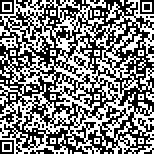| 引用本文: |
闪逸仙, 唐丽亚, 潘杰灵, 张玉乔, 齐映侠, 李江山, 陈敏, 李武.推拿按法调节巨噬细胞极化缓解慢性激痛点模型大鼠疼痛的效应研究[J].湖南中医药大学学报,2025,45(9):1663-1669[点击复制] |
|
| |
|
|
| 本文已被:浏览 144次 下载 92次 |
| 推拿按法调节巨噬细胞极化缓解慢性激痛点模型大鼠疼痛的效应研究 |
| 闪逸仙,唐丽亚,潘杰灵,张玉乔,齐映侠,李江山,陈敏,李武 |
| (澳门科技大学中医药学院, 中国 澳门 999078;湖南中医药大学针灸推拿与康复学院, 湖南 长沙 410208) |
| 摘要: |
| 目的 观察推拿按法调节M1/M2型巨噬细胞极化治疗慢性激痛点模型大鼠的效应。方法 将30只SPF级雄性SD大鼠随机分为空白组、模型组、按法组,每组10只。模型组、按法组大鼠采用钝性击打结合离心运动法在大鼠左侧大腿内侧肌建立激痛点模型,造模后按法组大鼠以按法刺激激痛点局部。采用压痛测试仪检测激痛点机械压痛阈值(PPT);软组织张力测定仪检测激痛点软组织张力;HE染色观察激痛点肌组织病理形态;ELISA检测激痛点肌组织中炎症因子[促炎因子白细胞介素(IL)-1β与肿瘤坏死因子-α(TNF-α),以及抗炎因子IL-4与IL-10]含量;Western blot和免疫荧光法检测激痛点肌组织中CD86及CD206蛋白表达。结果 与空白组相比,模型组大鼠PPT降低(P<0.05),软组织张力升高(P<0.05),IL-1β、TNF-α含量及CD86蛋白表达增加(P<0.05),IL-4、IL-10含量及CD206蛋白表达降低(P<0.05);与模型组相比,按法组大鼠PPT升高(P<0.05),软组织张力降低(P<0.05),IL-1β、TNF-α含量及CD86蛋白表达降低(P<0.05),IL-4、IL-10含量及CD206蛋白表达升高(P<0.05)。结论 推拿按法可通过促进M2型巨噬细胞极化、抑制M1型巨噬细胞极化,抑制局部炎症、缓解激痛点大鼠疼痛以及修复受损的肌组织。 |
| 关键词: 炎性疼痛 激痛点 推拿按法 巨噬细胞极化 压痛阈值 炎症因子 |
| DOI:10.3969/j.issn.1674-070X.2025.09.010 |
| 投稿时间:2025-04-03 |
| 基金项目:国家自然科学基金项目(82174526,82274676,82374613,82474669); 湖南省科技创新计划资助项目(2022RC1221); 湖南中医药大学研究生创新课题(CX20240733)。 |
|
| Effects of tuina pressing manipulation in regulating macrophage polarization to alleviate pain in chronic myofascial trigger point model rats |
| SHAN Yixian, TANG Liya, PAN Jieling, ZHANG Yuqiao, QI Yingxia, LI Jiangshan, CHEN Min, LI Wu |
| (Faculty of Chinese Medicine, Macau University of Science and Technology, Macau 999078, China;School of Acupuncturemoxibustion, Tuina and Rehabilitation, Hunan University of Chinese Medicine, Changsha, Hunan 410208, China) |
| Abstract: |
| Objective To investigate the effects of tuina pressing manipulation in regulating M1/M2 macrophage polarization for the treatment of chronic myofascial trigger point(MTrP) model rats. Methods Thirty SPF-grade male SD rats were randomized into three groups: a blank group, a model group, and a pressing manipulation group, with 10 rats in each group. Chronic MTrP models were induced in the left medial thigh muscles of rats in the model and pressing manipulation groups, using blunt impact combined with eccentric exercise. After modeling, rats in the pressing manipulation group received local stimulation of MTrPs with tuina pressing manipulation. The mechanical pressure pain threshold(PPT) at the MTrPs was measured using a pressure analgesiameter; soft tissue tension was checked with a soft tissue tension meter. Histopathological morphological changes in MTrP muscle tissues were observed via HE staining; inflammatory cytokines, including pro-inflammatory cytokines interleukin(IL)-1β and tumor necrosis factor-α(TNF-α), as well as anti-inflammatory cytokines IL-4 and IL-10, were examined using ELISA. Protein expressions of CD86 and CD206 in MTr P muscle tissues were measured by Western blot and immunofluorescence assays. Results Compared with the blank group, the model group exhibited a decrease in PPT(P<0.05) and an increase in soft tissue tension(P<0.05). The levels of IL-1β and TNF-α, as well as CD86 protein expression, were elevated(P<0.05), while the IL-4 and IL-10 levels, along with CD206 protein expression, were reduced(P<0.05). In contrast, the pressing manipulation group showed an increase in PPT(P<0.05)and a decrease in soft tissue tension(P<0.05) compared with the model group. The levels of IL-1β and TNF-α and CD86 protein expression were reduced(P<0.05), whereas the IL-4 and IL-10 levels and CD206 protein expression were elevated(P<0.05). Conclusion Tuina pressing manipulation can suppress local inflammation, alleviate pain, and repair damaged muscle tissues in chronic MTr P model rats by promoting M2 macrophage polarization and inhibiting M1 macrophage polarization. |
| Key words: inflammatory pain myofascial trigger points tuina pressing manipulation macrophage polarization pressure pain threshold inflammatory cytokines |
|

二维码(扫一下试试看!) |
|
|
|
|




